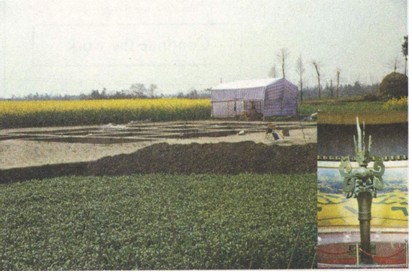人教高中英语高二下UNIT20-3(在线收听)


ROOTS OF CHINESE CULTURE
Jinsha Village near Chengdu, in southwest Sichuan province, became famous all over China in 2001. Construction workers from a local company were building roads there. On February 8, they found ivory and jade in the mud. Soon, the police arrived and closed the site. Since then, archaeologists have found more than a thousand artefacts, including gold, jade, bronze and stone objects as well as a large quantity of ivory that must have come from at least 500 elephants. The ivory and animal bones that were found will serve as important materials for the study of local geography, climate and the environment in ancient times.
Many of the relics look very much like those found at Sanxingdui. For example, a gold mask and a bronze statue of a man remind visitors of the bronze masks and big bronze statues at Sanxingdui because of their similar style. Among the many jade objects found at Jinsha, one piece, called a cong by ancient Chinese, was not made in Sichuan. It was transported there from the lower area of the Yangtze River. Other relics discovered at Jinsha made archaeologists believe that Sichuan not only had trade links with the Yangtze and Yellow River valleys, Yunnan and Guizhou provinces, but also with northern Vietnam.
Before the discoveries, it was believed that Sichuan only had a history of about 2,300 years. Now, archaeologists think that the Jinsha Ruins may have been the political and cultural centre of the ancient Shu Kingdom, which moved from Sanxingdui to Chengdu about 3,000 years ago.
Sanxingdui was first discovered by farmers. In the spring of 1929, a farmer in today's Nanxing Town, was working in the fields, when his son dug up a round piece of jade. They found a hole filled with more than 400 jade objects. Local teachers and officials came to his home, but none of them could say in which dynasty the jade objects were made. In 1953, Yan Kaizong accompanied his grandfather when he gave the relics from the ruins to the state. It was four o'clock in the afternoon when he and his grandpa reached the museum in Guanghan, where an official warmly received them. "My grandpa told us not to keep things that don't belong to us. I believe what he said," said Yan Kaizong.
Since 1929, more than 10,000 relics dating back to between 5000 BC and 3000 BC have been discovered. The Sanxingdui Ruins Site covers a vast area of about 12 square kilometres. From March to August 1986, archaeologists of the History Department of Sichuan University, Sichuan Archaeological Research Institute and the city of Guanghan dug 53 holes. When the work was finished, over 1,200 pieces, including bronze and gold masks, bronze objects and images, jade and ivory had been found. Archaeologists will continue their work, digging at the Sanxingdui Ruins from 2003 until 2010. They hope to discover some of the mysterious palaces, tombs of kings and bronze and jade workshops.